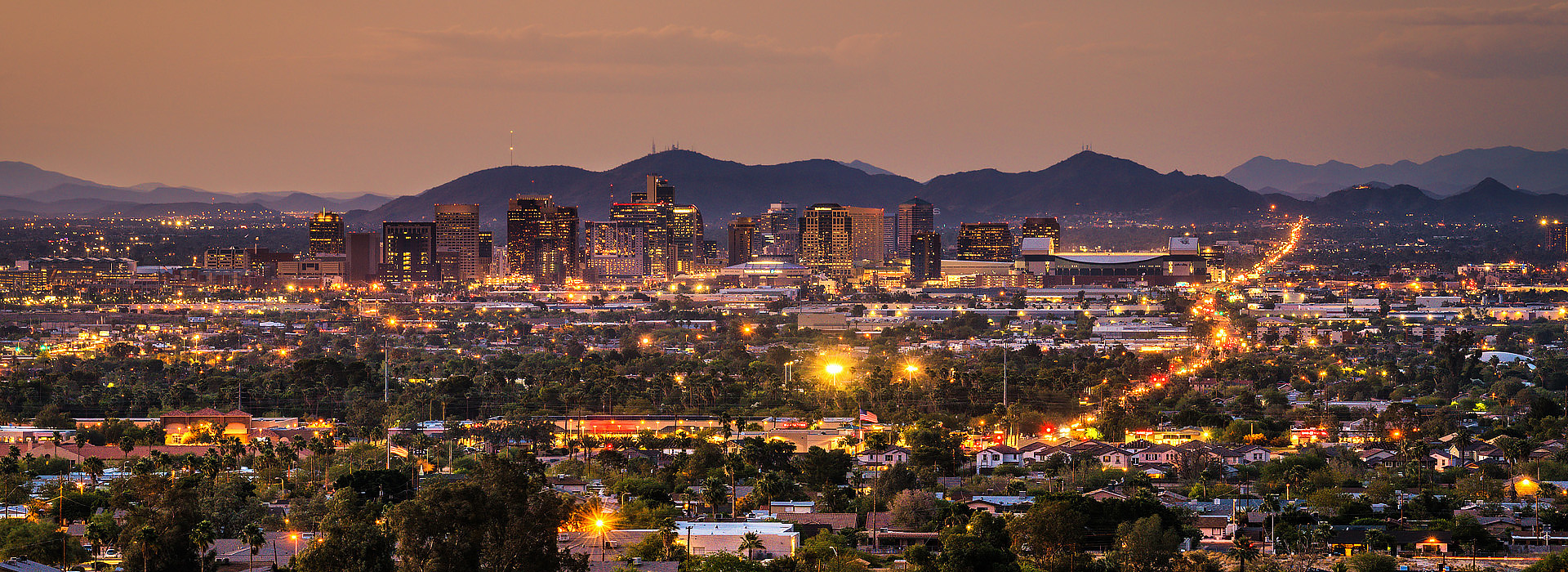In May, a University of Arizona resident scientist was killed while riding on his bicycle. If you or a loved one has been involved in a bicycle accident, you need to know what to do next.
Raphael D. Sagarin
University of Arizona associate research scientist, Raphael D. Sagarin, was riding his bicycle when he was struck by a pickup truck being driven by Gary L. Colvin, 44, of Tucson. According to Quentin Mehr, an Arizona Department of Public Safety spokesman, Colvin was allegedly impaired at the time the collision took place. He was immediately booked into the Pinal County jail and is facing manslaughter.
Sagarin was struck from the rear, and the investigation showed that the pickup had swerved partially off the road when it struck Sagarin just shortly after 6:30 p.m. Sagarin was wearing a helmet at the time but later died of his injuries.
The UA released this statement about Sagarin:
“Dr. Sagarin was committed to education and research, and understood that the Biosphere was a unique platform for science and education. He represented all of us in our commitment to quality and making things better,” said Joaquin Ruiz, dean of the UA College of Science. " ‘Rafe’ will be deeply missed. His energy and enthusiasm were contagious, and it was a blessing to have known such wonderful colleague."
Avoiding Accidents
Just because accidents involving bicycles, pedestrians, trucks, and cars happen every day, and seem as if they are a part of every day life, that doesn’t meant that they cannot be avoided or prevented. There are precautions you can take to keep you and your family safe.
According to the Centers for Disease Control and Prevention, a pedestrian death occurs every 2 hours. Accidents resulting in pedestrian-related injury occurs every 8 minutes. There are things we can do as a driving society to help reduce these numbers. Staying safe is a matter of paying attention and being aware of your surroundings, while also taking necessary precautions.
You Might Not Have the Right-of-Way
We grow up believing that pedestrians always have the right of way. But that’s not true. Under Arizona law, pedestrians only have the right-of-way when they walk within marked crosswalks. There are some exceptions made for unmarked crosswalks because they have a separate set of laws, but right-of-way is not given to pedestrians when they cross at any place other than a crosswalk. That means if you jaywalk, you are not protected by the idea that “pedestrians always have the right of way.”
Arizona Law
According to Arizona law, pedestrians have an obligation to never, “suddenly leave any curb or other place of safety and walk or run into the path of a vehicle that is so close that it is impossible for the driver to yield” (A.R.S. § 28-792).
Be a Good Pedestrian
Here’s how to stay safe and be a good pedestrian:
- Be cautious.
- Be alert when crossing streets at busy intersections.
- Increase your visibility by wearing bright reflective clothing.
- If you are walking at night, carry a flashlight or wear reflective clothing that will catch car headlights.
- If there are no sidewalks where you are walking, walk facing traffic. Cars will see you and you will be able to see the cars.
- Teach your children to look in both directions before crossing streets.
- If possible, only cross at designated crosswalks.
- Don’t assume that just because you are in a crosswalk that you are safe. Being in a crosswalk does not automatically mean that cars can see you.
- Make sure you can hear the road and everything on the road, including cars approaching from behind.
Be a Good Driver
Safety is not just up to pedestrians being aware of cars, but cars need to be completely aware of pedestrians and all other cars on the road. Here are some ways to ensure that you are a good and safe driver:
- Be cautious
- Remain alert when approaching streets or busy intersections.
- Make sure you are aware of any pedestrians that might be entering the road or on the road (running or bicyclists).
- If you are driving at night, make sure all of your headlights and tail-lights are working, and that you are clearly visible.
- Make sure your car is properly maintained. This includes frequent maintenance including light checks, engine checks, and brake checks.
- Pay special attention when entering or exiting parking lots. When you exit a parking lot you typically pass through a sidewalk that potentially has pedestrians walking on it.
- Follow and adhere to posted speed limits.
- Avoid distractions including texting, phone calls, or reaching for things that have fallen.
What you Need to Do to Be a Good Bicyclist
Being a good bicyclist means you follow these rules:
- Be cautious
- Remain alert when approaching streets or busy intersections.
- Make sure you are aware of any pedestrians or vehicles that might be on the road.
- Always ride in the designated bike lane if there is one. This means ride within in, not on the dividing line.
- If you are riding at night, make sure you are wearing reflective gear, or that your bike is equipped with reflective gear, and that you are clearly visible.
- Use the correct hand signals when making turns or moving into traffic.
- Make sure your bike is properly maintained. This includes frequent brake checks.
- Pay special attention when entering or exiting parking lots, as often you will need to cross a sidewalk to enter. This can mean hitting a pedestrian, or exiting or entering cars.
- Avoid distractions including texting, phone calls.
- Make sure you can hear the road and everything on the road, including cars approaching from behind.
Wear a Helmet
Though it might not be law in your state, if you are riding a bike, it is crucial that you wear a helmet. Wearing a helmet is the number one thing you can do to ensure your safety. It will provide some form of protection for your face, head, neck, and brain should you fall down. You should never ride without a helmet, even if you are only going a short distance, or if you are just riding around in a parking lot or enclosed area. It’s important to also remember that just because you’re wearing a helmet you are allowed to be reckless. Just because you are wearing protective gear, that doesn’t mean you are free from danger.
Helmet Safety Standards
Bike helmets are so important that the U.S. government created safety standards for them. Your helmet should have a Consumer Product Safety Commission (CPSC) sticker that says it meets standards set by the Consumer Product Safety Commission (CPSC). Many helmets are manufactured to be lightweight. If you hate how it looks, consider personalizing it with stickers or other decorative things. Just make sure the decorations to not interfere with the safety of the helmet. Personalizing your helmet can also help to make you more visible to oncoming cars.
Helmet Fit
Your bike helmet should fit you properly and not be too small or too big. If you’re unsure if your helmet fits you well, ask someone at a local bike store. You can also check online for tips on how a helmet should sit on your head. It should be worn level and cover your forehead. Do not tip it back so that your forehead is showing. The straps should also always be fastened and snug enough so that you can’t pull the helmet off or around your head.
Take Care of Your Helmet
Your helmet protects your head, so you need to protect your helmet. Take care of it. That means not throwing it around. This could damage the helmet and thus cause it to be less protective in a fall. Also, if you have fallen, and have thus used your helmet, get a new one. They tend to work less well after they have been put to work.
Reconstructing an Accident
It can be hard to know exactly what happened during an accident if there are no eye-witnesses. Without first hand accounts that are not directly involved it can be hard to deduce exactly what happened. When this occurs, the accident is reconstructed by investigators in order to get a full understanding. After the investigation, liability can be assessed. The dynamics, methodology, and principles involved in reconstructing a pedestrian-car accident are slightly different than those used to reconstruct car accidents. A investigator looks at car speed as well as pedestrian speed (which can be very difficult to determine), perception and reaction time, as well as highway design and sign placement. The pedestrian’s impact kinematics (how the pedestrian moved at or through the impact phase of the collision) are reconstructed. Once this information is determined, a lawyer can build negligence or wrongful death case based on the investigator’s findings.
Determining Negligence
In pedestrian and car accidents, negligence can be assigned to both sides of the accident: to the driver, or to the pedestrian, or to both. Drivers are considered negligent if they do not do the following:
- Pay attention to surroundings
- Adhere to posted speed limits
- Yield at stop lights and cross-walks
- Properly use turn signals
- Adhere to Arizona state traffic laws
A pedestrian can be considered negligent if they do the following:
- Run-out in front of cars
- Jaywalk
- Fail to use designated cross-walks
- Ignore pedestrian signals
- Fail to pay attention to surroundings and traffic situations
Working with a Personal Injury Attorney After an Accident
If you have been a victim in a car, truck, pedestrian, or bicycle accident, you should immediately contact a personal injury attorney that understands the specific laws around these types of accidents. They will be able to perform a full investigation and build your case. It’s crucial that you work with someone that knows the intricacies of the laws surrounding these types of cases as well as your specific state’s laws. The attorneys at Personal Injury Attorneys PLLC have experience handling personal injury cases such as car accidents, pedestrian accidents, and bicycle accidents. They will help build a case to ensure you receive everything you need to recover from your specific accident.


